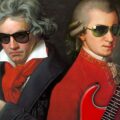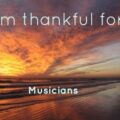Apr 13, 2016
Can Technology Save Classical Music?
This title is not mine, but belongs to a blog post on the Huffington Post Arts & Culture page from February. Julie Dobrow, Director of Communications and Media Studies at Tufts University, begins by citing the usual suspects: NEA studies indicating the steady decline in attendance at classical concerts, the declining sales of recorded classical music, etc.
Ms. Dobrow asks: “Can anything resurrect classical music from this fate?”
She then goes on to describe the Boston Symphony Orchestra’s “Casual Fridays” series of concerts aimed at attracting a younger audience, which features lower ticket prices, ‘come as you are’ dress code, “and a chance to use technology in a fascinating effort to connect with the music and the performers in different ways. A number of seats are in a ‘designated technology’ section. The BSO loans patrons iPads loaded with multimedia content and seats them behind large flat screens that give the audience the same view of conductor Andris Nelsons that the musicians have.”
Ms. Dobrow and her husband attended one of these and had some interesting observations. The iPad contained tons of information – including full scores of the concert repertoire, historical information and even an interview with a featured contemporary composer. In her words: “There was actually more to see and listen to than we had time to view before the concert began. And honestly, once it started, I barely saw anyone looking at the iPads because all eyes were focused on the flat screens. . .Watching Conductor Nelsons was simply too riveting.”
Andris Nelsons is, without question, one of my favorite conductors. I believe him to be one of the most expressive people out there on the podiums of major orchestras today. And I, too, love to watch Andris Nelsons! Try it yourself! And I’m happy for the BSO to have snagged him. That should be an incredible collaboration for what is, I hope, a decade or more.
But. . .after citing some other tech solutions being offered to enhance the classical music experience, there is no mention of the basic need to teach people the listening skills that will enable them to notice more detail in classical music, and thereby develop a deep emotional connection with it.
I guess the idea that people develop an ‘aha’ around whether they are actually giving music their undivided attention (listening) or merely hearing it as a background to visual images, other thoughts, etc. and learning to stretch their attention spans and really focus on the sounds themselves – perhaps seems too simple, too basic.
But for us at The Discovery Orchestra this is a ‘duh’ moment. These elementary concepts inform our mantra. One of the saddest indications about the state of classical music listening is the fact that Ms. Dobrow’s blog post – on the Huffington Post – elicited exactly three comments!
Ms. Dobrow concludes: “For those of us who love classical music and desperately want it to be loved by new generations, we can only hope that efforts like the BSO’s to blend technology with music will be successful in bringing in first-timers.”
Obviously anything that orchestras can do to help people get more ‘into’ the experience – the better.
However, some fun, brief instruction in how to listen can be so helpful, and technology, in the form of TV shows, video streams, YouTube videos and game apps can be effectively used as vehicles to present this instruction. We know these methods work! They’ve been time-tested! Try a Discovery Orchestra Chat!
The feedback we receive is phenomenal. “Am in Heaven, having just discovered your website and thence the Discover Orchestra Chats on YouTube! You wanted to know whether we viewers appreciate and learn from them. . .well YES! I’m addicted. I’ve already shown a couple to my kids as well. (California Viewer) We can only hope that the Huffington Post might someday invite us to blog about what we’re doing for their Arts & Culture section!








